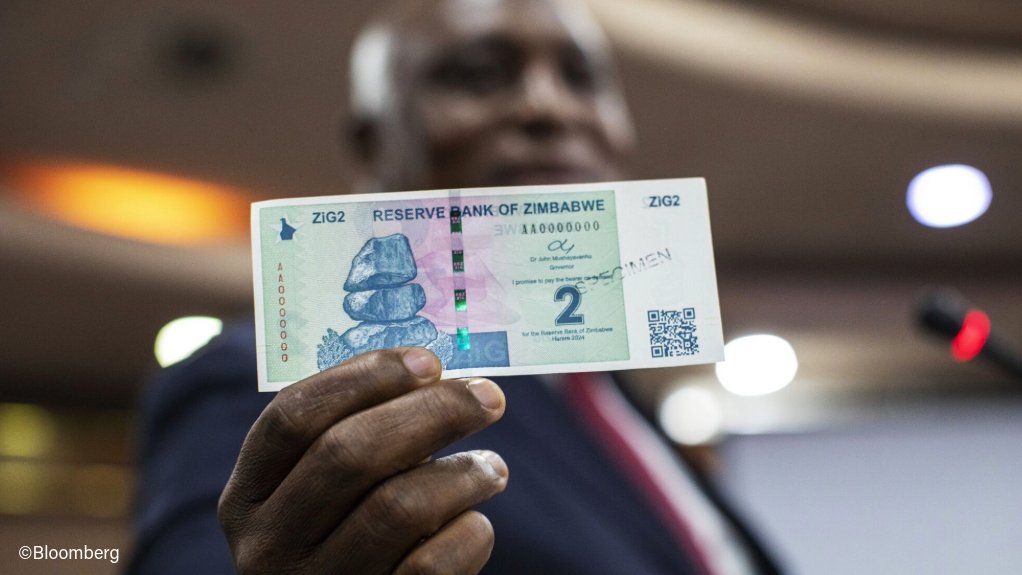A liquidity crunch in Zimbabwe is deepening the economy’s embrace of the US dollar and undermining the bullion-backed currency introduced by the government almost a year ago.
The ZiG, short for Zimbabwe Gold, which began trading on April 8, is the southern African nation’s sixth attempt since 2009 at replacing the dollar with a functional local currency. It has not gone well.
In September, after persistent weakness against the dollar, the Reserve Bank of Zimbabwe devalued the ZiG by 43%, raised the key interest rate to 35% from 20% and increased cash reserve requirements to steady the currency. It has depreciated almost 4% this year.
The stability measures have led to an “economy swimming in dollars,” said Eddie Cross, a Harare-based independent economist and former monetary policy committee member. The liquidity crunch has “now killed the ZiG,” he said. “The ZiG has retreated as a currency of trade and effectively we have dollarized.”
The tight monetary policy stance has fueled a slump with stocks plunging on Harare’s main exchange, consumer prices falling 0.1% in March and ZiG supply scant on the unofficial market.
The ZiG is being used to settle mostly minor transactions including utility and tax payments and a portion of civil servant wages. The rest is paid in dollars. The currency cannot be used to pay for essentials including fuel, rent and medicines.
The highest denomination ZiG banknote is worth about $7.50 — enough to buy six loaves of bread.
Despite being backed by more than $550-million in gold and cash reserves, used as a selling point to win public trust, its “limited use in salient sectors of the economy” makes differences with its failed predecessors seem “cosmetic,” said Jacques Nel, head of Africa macro at Oxford Economics.
“It would have taken something special to convince Zimbabweans that this time is different,” he said.
BUMPY RIDE
Not even the more than 30% surge in the bullion price since the gold-backed currency’s adoption has helped.
Part of the problem is that the level of hard currency reserves backing it are “woefully inadequate,” because the nation has been locked out of capital markets since a debt default in 1999, said Hasnain Malik, an emerging-market strategist at Tellimer in Dubai. “Its demise should be no surprise,” he said.
Still, policymakers don’t plan to loosen their tight monetary stance or ditch the ZiG. Last week, the central bank kept the key rate at 35% and added that it would remain vigilant to any emerging risks to inflation and exchange rate stability.
“It’s going to be a bumpy ride, but we are fully committed,” Innocent Matshe, the RBZ’s deputy governor told business leaders on Feb. 13 in the capital, Harare.
The currency’s survival depends on the ruling party’s support, said Tony Hawkins, an independent economic consultant in Harare and former economics professor at the University of Zimbabwe.
History has shown that every new currency in Zimbabwe has “a shorter lifespan” than its predecessor and with the ZiG not really being used it could be headed for the same fate, he said.
“What else is the ZiG used for except arbitrage opportunities and to pay civil servants,” Hawkins, said. “I can’t see the ZiG surviving that long.”
EMAIL THIS ARTICLE SAVE THIS ARTICLE FEEDBACK
To subscribe email subscriptions@creamermedia.co.za or click here
To advertise email advertising@creamermedia.co.za or click here











